Publications

September 20, 2013
In this brief, authors Marybeth Mattingly, Jessica Carson, and Andrew Schaefer use American Community Survey data released on September 19, 2012, to explore patterns of child poverty across states and place types, focusing on changes both since 2011 and since the recession began in 2007.

June 18, 2013
This brief describes the population who would be directly affected by the President’s proposal to increase the minimum wage to $9.00 per hour: workers earning between $7.25 and $9.00 per hour.
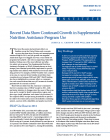
January 15, 2013
This brief uses data from the American Community Survey to examine rates of Supplemental Nutrition Assistance Program (SNAP) receipt in 2011, with particular attention to changes since the onset of the recession, and to receipt by family composition, region, and place type (rural, suburban, and central city locations).
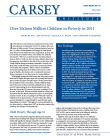
September 20, 2012
UPDATE: This brief has been updated to include revised versions of Figure 1 (page 2) and Appendix 1 (page 6). The original version of this brief overestimated the statistical significance of some state-level changes in child poverty between 2010 and 2011, and has been revised accordingly.
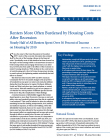
May 22, 2012
This brief uses data from the 2007 and 2010 American Community Survey to document changes in the proportion of household income spent on rental costs (rent plus utilities) during the Great Recession, by region (Northeast, Midwest, South, and West) and place type (rural, suburban, or central city location).

December 7, 2011
This brief uses data from the 2008, 2009, and 2010 American Community Survey to document changes in rates of children’s health insurance, between private and public. The authors report that, nationally, private health insurance for children decreased by just under 2 percentage points, while public health insurance increased by nearly 3 percentage points.

November 1, 2011
This brief uses data from the 2007, 2009, and 2010 American Community Survey to provide an up-to-date look at changes in SNAP receipt over the course of the recession. The author reports that receipt of SNAP continued to rise in 2010, increasing 4 percentage points since the recession began in 2007, and 1.6 percentage points since 2009.
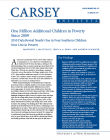
September 22, 2011
American Community Survey (ACS) data released on September 22, 2011 allow for a detailed look at child poverty by state and place, adding to the understanding of the economic landscape described by the Current Population Survey (CPS) data released last week. While the CPS data are useful for providing a snapshot of poverty across the nation, the larger sample size of the ACS--three million…
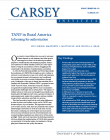
September 20, 2011
In 1996 welfare reform ushered in a new era in which cash assistance for poor parents became both temporary and conditional on activities to promote economic independence through work. Cash assistance from TANF relieves, but does not eliminate, poverty because benefit levels are far too low to lift families above the poverty threshold. These ameliorative effects are weaker in rural than urban…
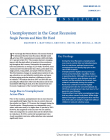
August 31, 2011
This brief discusses the sweeping impact the Great Recession has had on Americans, particularly men, single parents, young adults, and people with less education. Using data from the 2007 and 2010 Annual Social and Economic Supplement of the Current Population Survey, the authors report that unemployment is highest among men and among unmarried adults, regardless of place or parenting status.…
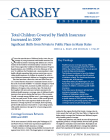
July 27, 2011
This brief uses data collected in 2008 and 2009 from the U.S. Census Bureau's American Community Survey (ACS) to examine changes in overall insurance coverage rates, as well as changes in types of coverage, and differences by region, state, and place type. The data show that together with new and more inclusive parameters for children's health insurance coverage, rates of children…
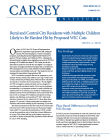
July 19, 2011
This brief uses data from the 2007 and 2010 Current Population Survey’s Annual Social and Economic Supplement to describe the distribution of the Special Supplemental Nutrition Program for Women, Infants, and Children (WIC) receipt across the population and to detail place-based differences in receipt. WIC is a nutrition program that serves pregnant or postpartum women, infants, and children up…

May 3, 2011
This brief examines heating assistance usage and the implications of President Obama's 2012 budget proposal to cut $2.5 billion from the $5.1 billion energy assistance fund for low-income families at a time when families are struggling with higher energy costs amid a difficult economy. The federal Low-Income Home Energy Assistance Program (LIHEAP) assists vulnerable families in paying their…

December 14, 2010
The Supplemental Nutrition Assistance Program (SNAP) is one of the most responsive federal programs to economic downturns, as evidence by the increases in SNAP use between 2007 and 2009. Nationally, more than one in ten households relies on SNAP benefits, and the rate is even higher in rural areas, with more than 13 percent of households reporting use. This brief examines the trends in SNAP use…

October 25, 2010
Measuring by race, place, and family, this brief highlights poverty rates for two rural groups--young black children and children of single mothers--who each face rates around 50%.
